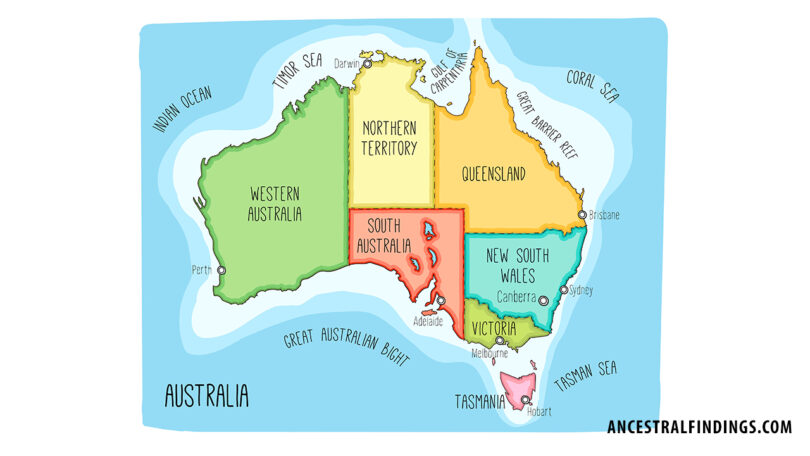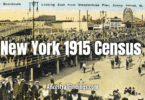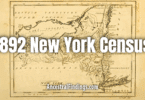Census records are among the most valuable resources for genealogists. They offer a snapshot of society at specific points in time, recording details that help us trace our ancestors’ movements, occupations, and living conditions. In Australia, census records have been pivotal in documenting the country’s growth, population changes, and social structure since the 19th century. These records provide a treasure trove of information for genealogists, giving us a deeper understanding of where our ancestors lived, how they worked, and who they lived with.
A Brief History of Australian Censuses
Australia’s history with census-taking dates back to the early days of the colonies. The first general census was taken in New South Wales in 1828, primarily to record the population of convicts, free settlers, and indigenous people. As the Australian colonies developed, more regular censuses were conducted to assess population growth, economic conditions, and the social composition of the population.
By the mid-19th century, the census had become a regular feature in most of the colonies. Following Australia’s federation in 1901, the first national census was taken in 1911. Since then, censuses have been conducted every five years, with the exception of 1931 due to the Great Depression and 1941 during World War II. These censuses provide a continuous record of Australia’s population growth and the changing makeup of society.
The Importance of Census Records for Genealogists
Census records are invaluable to you for several reasons. They provide detailed information about individuals and households, offering insights into:
- Names: The names of individuals living in a household, including the head of the household, family members, and sometimes boarders or servants.
- Ages and Birthplaces: Census records often include the ages and birthplaces of individuals, which are critical for building family trees and tracing ancestors back to their country of origin.
- Occupations: The occupations of household members are frequently listed, providing a glimpse into your ancestors’ economic and social status.
- Residences: Census records document where people lived, sometimes even specifying the address. This allows genealogists to track their ancestors’ movements and understand their environments.
- Marital Status and Relationships: Censuses also indicate relationships between household members, such as spouse, child, or parent, helping genealogists establish family connections.
By analyzing census data, you can build a picture of their ancestors’ lives at specific points in time, tracing changes in occupation, family size, and location over the years.
Key Historical Context: Census Data and Australia’s Development
Census data doesn’t just provide names and dates; it reflects the larger historical events that shaped Australia’s development. Understanding the historical context of each census can help genealogists interpret the data more effectively.
- The Gold Rush (1850s): Censuses taken during the 1850s reflect the dramatic population boom caused by the discovery of gold. As thousands of immigrants arrived in Australia seeking their fortune, census records from this period often show families who came from Europe, North America, and China.
- Federation and Early 20th Century (1901-1911): The first national census following the Federation in 1901 provides a snapshot of a newly united Australia. These records are valuable for identifying immigrant families who arrived in the 19th century as Australia expanded.
- Post-War Immigration Boom (1940s-1970s): Following World War II, Australia’s population surged with new waves of immigrants. Census data from this era is crucial for tracing families who arrived as part of the government’s post-war immigration program, including displaced persons from Europe and “Ten Pound Poms” from the UK.
The census records reflect each of these historical periods, giving you insights into the broader societal trends that shaped their ancestors’ lives.
Challenges and Limitations of Australian Census Records
Despite their value, Australian census records come with a few challenges. Privacy laws mean that detailed census information is often restricted for many years after it’s collected. In some cases, specific personal data is not made publicly available for 99 years. As a result, genealogists often rely on older censuses for information about ancestors.
Additionally, some early census records were destroyed or lost. For example, many of the original records from the 19th-century New South Wales censuses were destroyed, meaning that researchers must often rely on reconstructed data or alternative sources like church records and land grants.
Accessing Australian Census Records
Fortunately, despite some limitations, a wealth of Australian census data is accessible for genealogists today. Here are some key resources for finding and using these records:
- Australian Bureau of Statistics (ABS)
The ABS provides access to various census data, although personal information is limited due to privacy restrictions. The ABS website includes data tables and demographic summaries that can help understand broader population trends.
- Ancestry and Findmypast
These genealogy websites offer digitized access to many older Australian census records, including fragments from the 19th century. They also provide tools for building family trees and cross-referencing census data with other historical records.
- Trove (National Library of Australia)
Trove provides access to digitized newspapers, which often include census summaries, advertisements, and government notices related to the census. These can provide additional context or help you track down ancestors not listed in official census records.
Case Study: Using Census Records to Trace a Family’s Journey
Let’s consider a hypothetical example of how census records can be used to trace an Australian family’s journey. Suppose you’re researching the Moore family, who arrived in Australia from Ireland during the 1850s. By accessing the 1856 New South Wales census, you discover that William Moore, aged 35, was listed as a farmer living near Bathurst with his wife and two children.
Further research in the 1861 census shows that the family had expanded, with two more children, and had moved closer to Sydney. The census lists William’s occupation as a blacksmith, indicating a change in profession, likely due to economic opportunities in the growing city. By cross-referencing this information with immigration records, you confirm that William had arrived in Australia in 1851 during the Gold Rush.
This case study illustrates how census data can be used to trace a family’s movements, changes in occupation, and growth over time, helping genealogists build a more complete picture of their ancestors’ lives.
The Power of Census Records in Genealogy
Census records are a crucial resource for genealogists tracing their Australian ancestry. They offer a snapshot of life at specific points in time, reflecting both individual family details and broader societal changes. Whether your ancestors were gold miners, farmers, or post-war immigrants, census data can provide vital clues that help you trace their journey through Australia’s history.
As you explore census records, remember to look beyond the data to the historical events that shaped your ancestors’ lives. By doing so, you can create a richer, more meaningful narrative of your family’s past, connecting names and dates with the larger forces that influenced their world.







